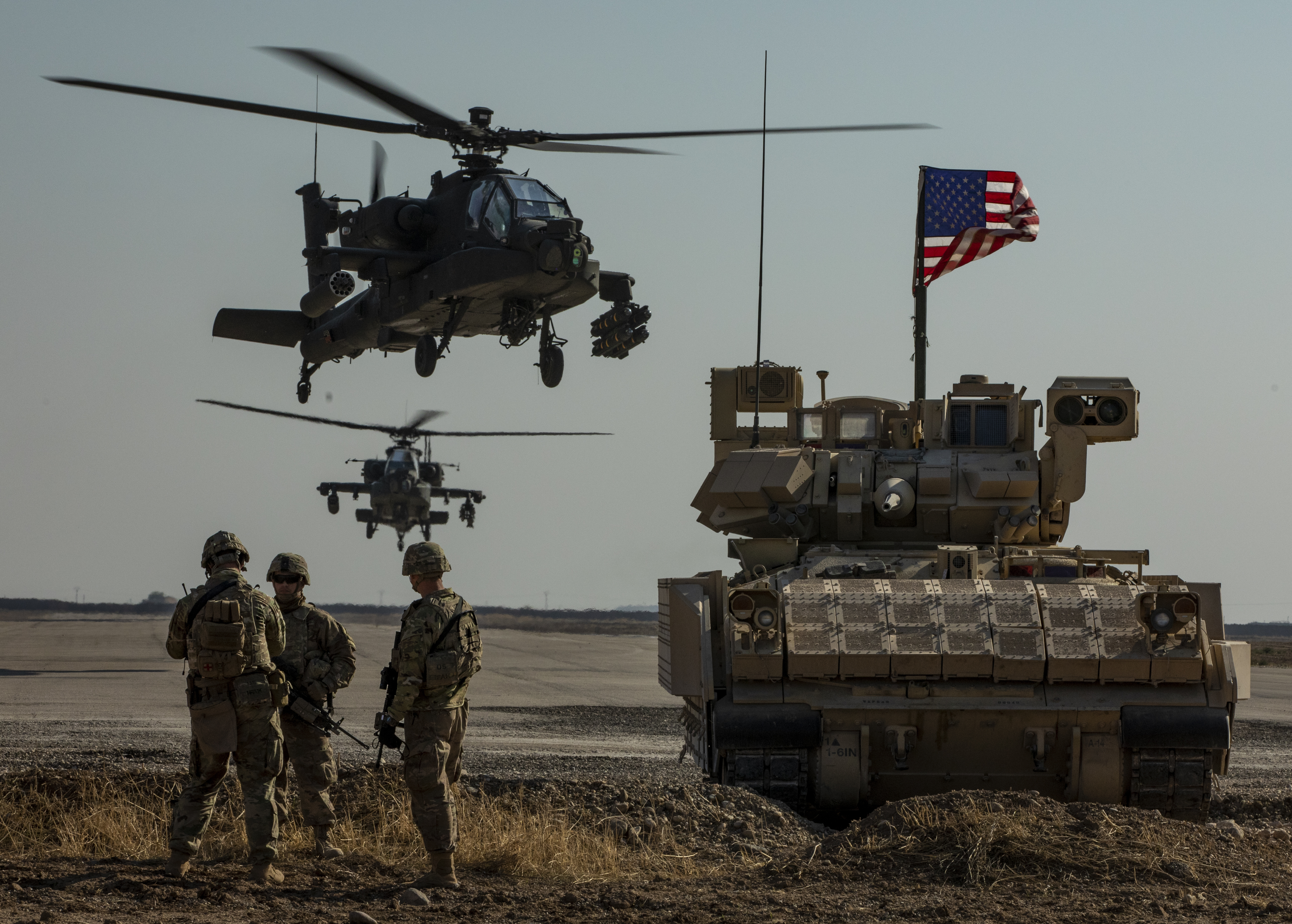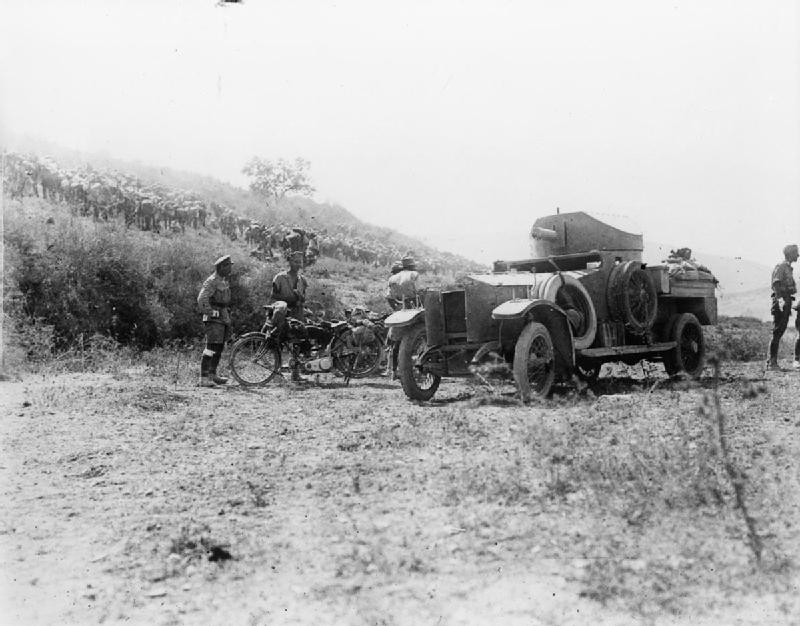|
Maneuver Warfare
Maneuver warfare, or manoeuvre warfare, is a military strategy which emphasizes movement, initiative and surprise to achieve a position of advantage. Maneuver seeks to inflict losses indirectly by envelopment, encirclement and disruption, while minimizing the need to engage in frontal combat. In contrast to attrition warfare where strength tends to be applied against strength, maneuver warfare attempts to apply strength against weakness in order to accomplish the mission. Maneuver warfare, the use of initiative, originality and the unexpected, combined with a ruthless determination to succeed, seeks to avoid opponents' strengths while exploiting their weaknesses and attacking their critical vulnerabilities and is the conceptual opposite of attrition warfare. Rather than seeking victory by applying superior force and mass to achieve physical destruction, maneuver uses preemption, deception, dislocation, and disruption to destroy the enemy's will and ability to fight. Historicall ... [...More Info...] [...Related Items...] OR: [Wikipedia] [Google] [Baidu] |
Mission-type Tactics
Mission-type tactics ( German: ''Auftragstaktik'', from ''Auftrag'' and ''Taktik''; also known as mission command in the United States and the United Kingdom) is a method of command and delegation where the military commander gives subordinate leaders a clearly-defined objective, high-level details such as a timeframe, and the forces needed to accomplish that objective. The subordinate leaders are given planning initiative and freedom of execution: they decide on the methods to achieve the objective independently. This allows a high degree of flexibility at the operational and tactical levels of command, which allows for faster decision-making on the ground and frees the higher leadership from managing the tactical details to concentrate on the strategic picture. This may be contrasted with "Befehlstaktik" or command-type tactics. For the success of mission-type tactics, the subordinate leaders must understand the orders' intent and be trained to act independently. The succes ... [...More Info...] [...Related Items...] OR: [Wikipedia] [Google] [Baidu] |
Napoleon I
Napoleon Bonaparte (born Napoleone di Buonaparte; 15 August 1769 – 5 May 1821), later known by his regnal name Napoleon I, was a French general and statesman who rose to prominence during the French Revolution and led Military career of Napoleon, a series of military campaigns across Europe during the French Revolutionary and Napoleonic Wars from 1796 to 1815. He led the French First Republic, French Republic as French Consulate, First Consul from 1799 to 1804, then ruled the First French Empire, French Empire as Emperor of the French from 1804 to 1814, and briefly again in 1815. He was King of Italy, King of Kingdom of Italy (Napoleonic), Italy from 1805 to 1814 and Protector of the Confederation of the Rhine, Protector of the Confederation of the Rhine from 1806 to 1813. Born on the island of Corsica to a family of Italian origin, Napoleon moved to mainland France in 1779 and was commissioned as an officer in the French Royal Army in 1785. He supported the French Rev ... [...More Info...] [...Related Items...] OR: [Wikipedia] [Google] [Baidu] |
Defense Technical Information Center
The Defense Technical Information Center (DTIC, ) is the repository for research and engineering information for the United States Department of Defense (DoD). DTIC's services are available to DoD personnel, federal government personnel, federal contractors and selected academic institutions. The general public can access unclassified information through its public website. History The DTIC traces its history to the June 1945 formation of the Air Documents Research Center (ADRC), a joint effort of the US Army Air Force, US Navy and Royal Air Force to build a single collection of captured German aeronautical research, based in London. The ADRC was initially tasked with the sorting of the document collection into three broad groups; documents that would assist the war in the Pacific theater, documents of immediate intelligence interest to the United States or British forces and documents of interest for future research. With the ending of the war in 1945, the ADRC moved to Wrig ... [...More Info...] [...Related Items...] OR: [Wikipedia] [Google] [Baidu] |
Muhammad II Of Khwarazm
'Alā' al-Din Muhammad II (Persian language, Persian: علاءالدین محمد خوارزمشاه; full name: ''Ala ad-Dunya wa ad-Din Abul-Fath Muhammad Sanjar ibn Tekish'') was the Shah of the Khwarazmian Empire from 3 August 1200 to 11 January 1221. His ancestor was Anushtegin Gharchai, a Turkic peoples, Turkic Ghilman, Ghulam who eventually became a viceroy of a small province in Central Asia named Khwarazm. He was subjected to the Mongol conquest of the Khwarazmian Empire, which resulted in the utter destruction of his empire. Reign After his father Ala ad-Din Tekish, Tekish died, Muhammad succeeded him. Right after his accession, however, his domains were invaded by the two Ghurid brothers Ghiyath al-Din Muhammad, Ghiyath al-Din Ghori and Mu'izz al-Din. Within weeks, the two brothers had moved their armies westwards into Greater Khorasan, Khorasan. Once they had captured Nishapur, Mu'izz al-Din was sent on an expedition towards Ray, Iran, Ray, but he let his troops get ou ... [...More Info...] [...Related Items...] OR: [Wikipedia] [Google] [Baidu] |
Khwarazmian Empire
The Khwarazmian Empire (), or simply Khwarazm, was a culturally Persianate society, Persianate, Sunni Muslim empire of Turkic peoples, Turkic ''mamluk'' origin. Khwarazmians ruled large parts of present-day Central Asia, Afghanistan, and Iran from 1077 to 1231; first as vassals of the Seljuk Empire and the Qara Khitai (Western Liao dynasty), and from circa 1190 as independent rulers up until the Mongol conquest of the Khwarazmian Empire, Mongol conquest in 1219–1221. The date of the founding of the state remains debatable. The dynasty that ruled the empire was founded by Anushtegin Gharchai, Anush Tigin (also known as Gharachai), initially a Turkic slave of the rulers of Gharchistan, later a Mamluk in the service of the Seljuks. However, it was Atsiz, Ala ad-Din Atsiz (r. 1127–1156), descendant of Anush Tigin, who achieved Khwarazm's independence from its neighbors. The Khwarazmian Empire eventually became the most powerful state in the lands around Persia, defeating the S ... [...More Info...] [...Related Items...] OR: [Wikipedia] [Google] [Baidu] |
Genghis Khan
Genghis Khan (born Temüjin; August 1227), also known as Chinggis Khan, was the founder and first khan (title), khan of the Mongol Empire. After spending most of his life uniting the Mongols, Mongol tribes, he launched Mongol invasions and conquests, a series of military campaigns, conquering large parts of Mongol conquest of China, China and Mongol invasion of Central Asia, Central Asia. Born between 1155 and 1167 and given the name Temüjin, he was the eldest child of Yesugei, a Mongol chieftain of the Borjigin, Borjigin clan, and his wife Hö'elün. When Temüjin was eight, his father died and his family was abandoned by its tribe. Reduced to near-poverty, Temüjin killed Behter, his older half-brother to secure his familial position. His charismatic personality helped to attract his first followers and to form alliances with two prominent Eurasian Steppe, steppe leaders named Jamukha and Toghrul; they worked together to retrieve Temüjin's newlywed wife Börte, who had b ... [...More Info...] [...Related Items...] OR: [Wikipedia] [Google] [Baidu] |
Mongol Empire
The Mongol Empire was the List of largest empires, largest contiguous empire in human history, history. Originating in present-day Mongolia in East Asia, the Mongol Empire at its height stretched from the Sea of Japan to parts of Eastern Europe, extending northward into parts of the Arctic; eastward and southward into parts of the Indian subcontinent, mounting invasions of Southeast Asia, and conquering the Iranian plateau; and reaching westward as far as the Levant and the Carpathian Mountains. The Mongol Empire emerged from the unification of several nomad, nomadic tribes in the Mongol heartland under the leadership of Temüjin, known by the title of Genghis Khan (–1227), whom a council proclaimed as the ruler of all Mongols in 1206. The empire grew rapidly under his rule and that of his descendants, who sent out Mongol invasions, invading armies in every direction. The vast transcontinental empire connected the Eastern world, East with the Western world, West, and the Pac ... [...More Info...] [...Related Items...] OR: [Wikipedia] [Google] [Baidu] |
Opportunity Cost
In microeconomic theory, the opportunity cost of a choice is the value of the best alternative forgone where, given limited resources, a choice needs to be made between several mutually exclusive alternatives. Assuming the best choice is made, it is the "cost" incurred by not enjoying the ''benefit'' that would have been had if the second best available choice had been taken instead. The '' New Oxford American Dictionary'' defines it as "the loss of potential gain from other alternatives when one alternative is chosen". As a representation of the relationship between scarcity and choice, the objective of opportunity cost is to ensure efficient use of scarce resources. It incorporates all associated costs of a decision, both explicit and implicit. Thus, opportunity costs are not restricted to monetary or financial costs: the real cost of output forgone, lost time, pleasure, or any other benefit that provides utility should also be considered an opportunity cost. Types Expl ... [...More Info...] [...Related Items...] OR: [Wikipedia] [Google] [Baidu] |
Combined Arms
Combined arms is an approach to warfare that seeks to integrate different combat arms of a military to achieve mutually complementary effects—for example, using infantry and armoured warfare, armour in an Urban warfare, urban environment in which each supports the other. According to the strategist William S. Lind, combined arms can be distinguished from the concept of "supporting arms" as follows: Combined arms hits the enemy with two or more arms simultaneously in such a manner that the actions he must take to defend himself from one make him more vulnerable to another. In contrast, supporting arms is hitting the enemy with two or more arms in sequence, or if simultaneously, then in such combination that the actions the enemy must take to defend himself from one also defends himself from the other(s). Though the lower-military rank, echelon units of a combined arms team may be of similar types, a balanced mixture of such units are combined into an effective higher-echelon ... [...More Info...] [...Related Items...] OR: [Wikipedia] [Google] [Baidu] |
Schwerpunkt
''Blitzkrieg'(Lightning/Flash Warfare)'' is a word used to describe a combined arms surprise attack, using a rapid, overwhelming force concentration that may consist of armored and motorized or mechanized infantry formations, together with artillery, air assault, and close air support. The intent is to break through an opponent's lines of defense, dislocate the defenders, confuse the enemy by making it difficult to respond to the continuously changing front, and defeat them in a decisive : a battle of annihilation. During the interwar period, aircraft and tank technologies matured and were combined with the systematic application of the traditional German tactic of (maneuver warfare), involving the deep penetrations and the bypassing of enemy strong points to encircle and destroy opposing forces in a (cauldron battle/battle of encirclement). During the invasion of Poland, Western journalists adopted the term ''blitzkrieg'' to describe that form of armored warfare. The te ... [...More Info...] [...Related Items...] OR: [Wikipedia] [Google] [Baidu] |
OODA Loop
The OODA loop (observe, orient, decide, act) is a decision-making model developed by United States Air Force Colonel John Boyd. He applied the concept to the combat operations process, often at the operational level during military campaigns. It is often applied to understand commercial operations and learning processes. The approach explains how agility can overcome raw power in dealing with human opponents. The OODA loop As can be seen from the diagram, the OODA loop includes continuous collection of feedback and observations. This enables late commitment, which is an important element of agility. This is in contrast to the PDCA (plan–do–check–act) cycle which requires early commitment. Use in law and business The OODA loop has become an important concept in litigation, business, law enforcement, management education, military strategy and cyber security, and cyberwarfare. According to Boyd, decision-making occurs in an iterative cycle of "observe, orient, decide, ... [...More Info...] [...Related Items...] OR: [Wikipedia] [Google] [Baidu] |






